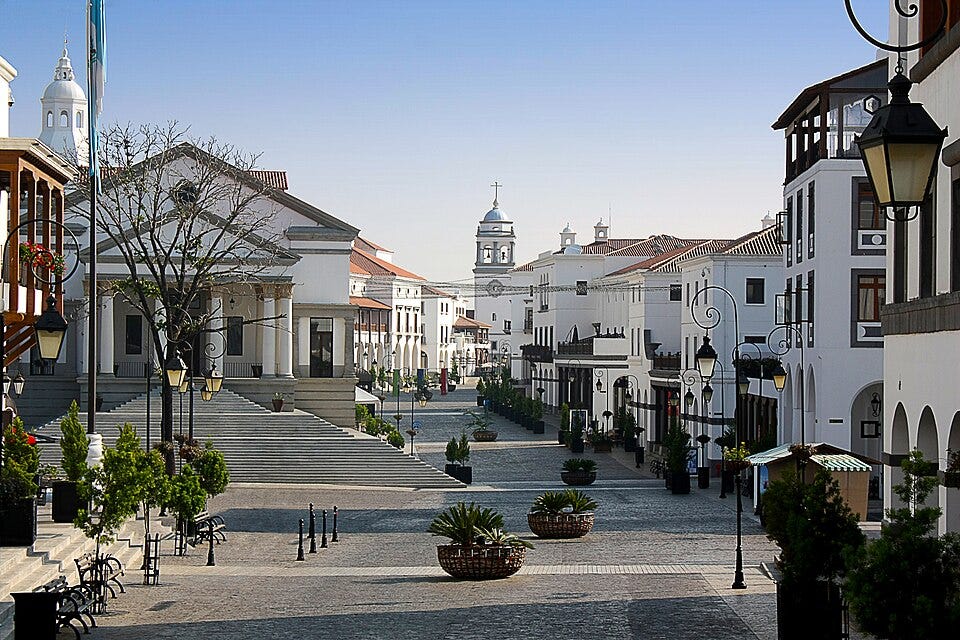Cultural Renewal Case Study #1: A Modern City Built on Traditional Principles
Newly-built cities like Cayalá in Guatemala--part of a growing urban and architectural renaissance --restore beauty, history, and a human scale to the modern cityscape
NOTE: This is a free preview of my new series of posts, Cultural Renewal Case Studies, a collection of in-depth looks at people, events, organizations, and movements actively engaged in rebuilding Western culture based on traditional principles. These case studies will highlight people busy reforming modern culture in accordance with the good, the true, and the beautiful. Instead of just criticizing the ills of modernity, they’ve gotten to work healing them, providing helpful lessons and models for the rest of us.
To receive future installments of this exciting new series, become a paid subscriber. Please share this post widely, too, so we can get the word out about this new series, which, I pray, will bring hope and inspiration to many.
Study the image above. Can you guess where and when this city was built? At first glance, it appears to be a very old city, possibly an early Spanish settlement in central or South America or maybe a 16th century Italian village. Given the city’s traditional layout and architectural style, these would be reasonable guesses.
But those guesses are wrong.
The city was actually built in the 2010’s by a contemporary architectural firm called Estudio Urbano. The architects of this firm, Pedro Godoy and Maria Sanchez, are part of a minority of architects trained in classical architecture—in this case at the University of Notre Dame, one of the few universities still offering this kind of formation in traditional design. These traditional design principles include an emphasis on harmony, symmetry, history, walkability, and beauty.
As a video by The Aesthetic City explains, Cayalá began as a family-owned, hilltop plot of land within Guatemala City. When the family decided to develop this piece of land around the year 2000, they got connected with Godoy and Sanchez through a mutual acquaintance. Godoy and Sanchez saw this as an opportunity to build a new kind of town—or rather, an old one. As Sanchez says in the video, “The concept was to bring the Christian city, that comes from the Persian, Greek, Roman city.” Godoy and Sanchez’s firm, Estudio Urbano, wished to recast something very old in a modern setting.
“The concept was to bring the Christian city, that comes from the Persian, Greek, Roman city.”
Many people might at first be surprised to hear a modern architect praising such ancient designs. Aren’t we beyond all that? Not at all. And Sanchez isn’t the first architect to recognize the enviable quality of medieval architectural and urban design. In his 1836 book Contrasts, the architect Augustus Pugin—well-known for contributing to the design of Elizabeth Tower (home of Big Ben)—wrote, “On comparing the Architectural Works of the last three centuries with those of the Middle Ages, the wonderful superiority of the latter must strike every attentive observer.”
To achieve their vision of a modern city modelled on these superior cities of the past, Godoy and Sanchez partnered with renowned city-planner and champion of traditional urban design Léon Krier. Krier was a strong advocate of restorative urban planning that relies on traditional design features, harmonious arrangements of buildings, community-fostering structures, and a human scale—as opposed to the visually cacophonous cityscapes we see today dominated by skyscrapers and built to facilitate corporations and machines more than human people. Krier played a key role in the development of a movement called “new urbanism.” According to Congress for New Urbanism, the movement “is a planning and development approach based on the principles of how cities and towns had been built for the last several centuries: walkable blocks and streets, housing and shopping in close proximity, and accessible public spaces.” New urbanism emphasizes “mixed-use” neighborhoods, areas that combine different land uses, such as residential, commercial, and cultural—thus helping to integrate human life into something holistic. All these ideas were embraced by the team that designed Cayalá, this old-yet-new town.
The result of Godoy, Sanchez, and Krier’s efforts—the little city of Cayalá—stuns visitors with its beauty, harmony, and tranquility. It is a city somehow both ancient and new, timeless yet rooted in history, practical and welcoming yet noble and elevating.
Here are a few more images of the city:

Notice in the above image how the city designers placed a magnificent church in the town’s center, in keeping with the tradition of medieval villages.
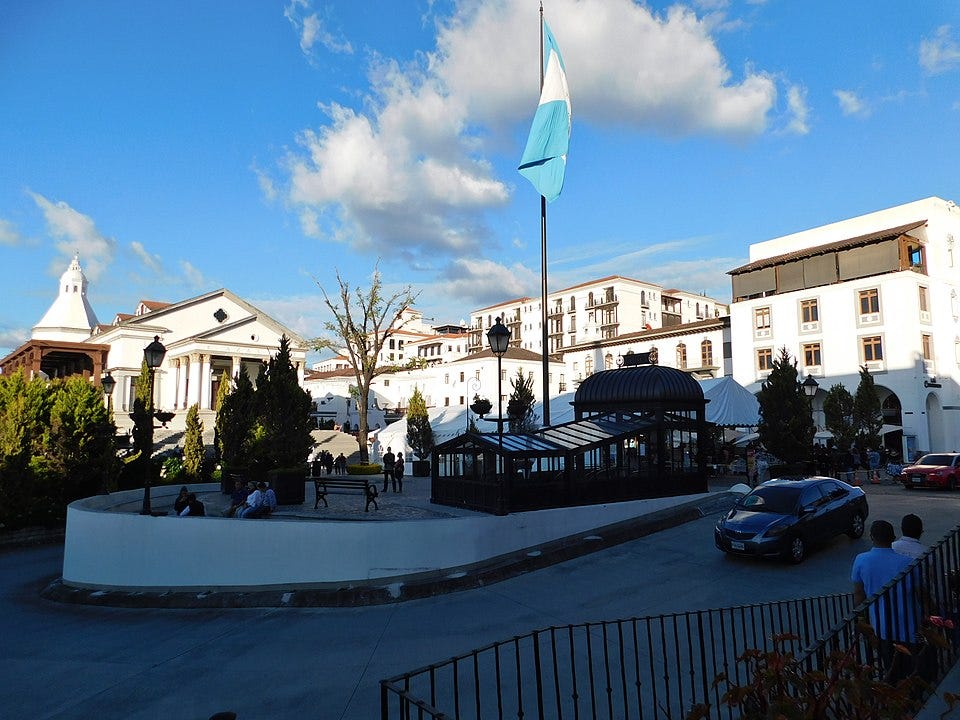
No strange, amorphous, disjointed modern sculptures in Cayalá; instead, we have a classically-inspired sculpture of a man that reflects the style of the buildings as well as a traditional understanding of art’s mimetic purpose:
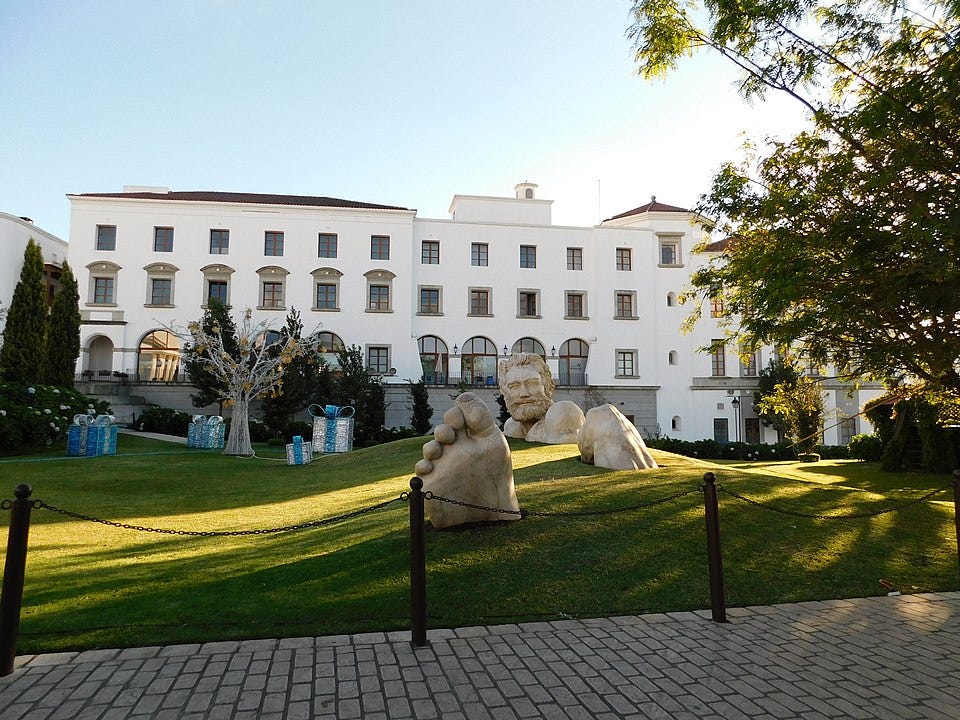
The city features small blocks featuring buildings with relatively few stories—again, maintaining a human scale. Pedestrian streets meander through shopping areas, restaurants, and public gathering spaces.
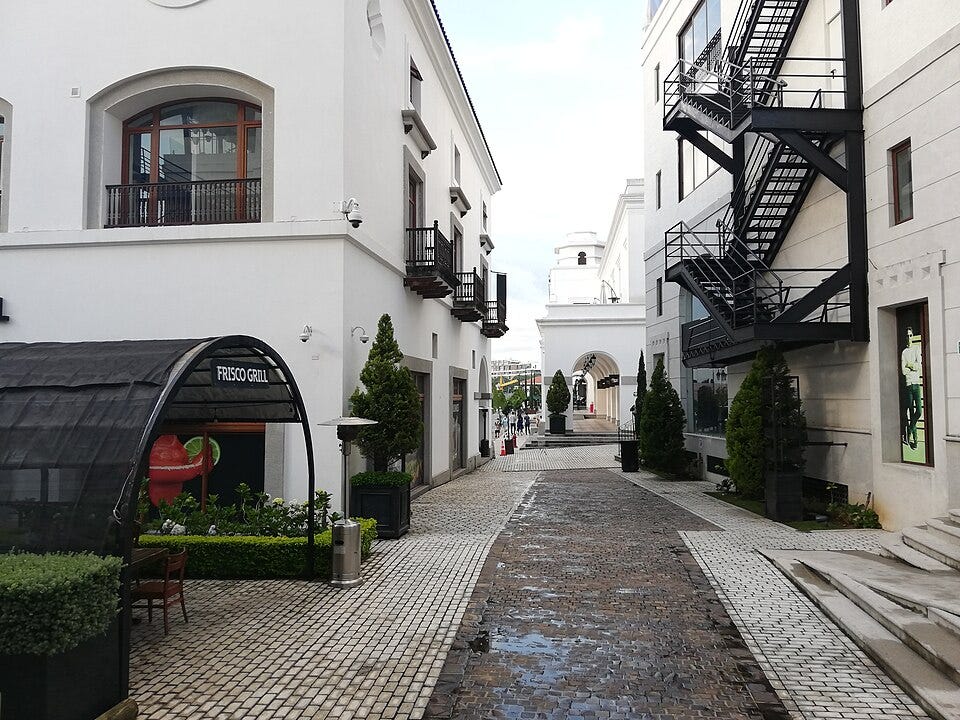
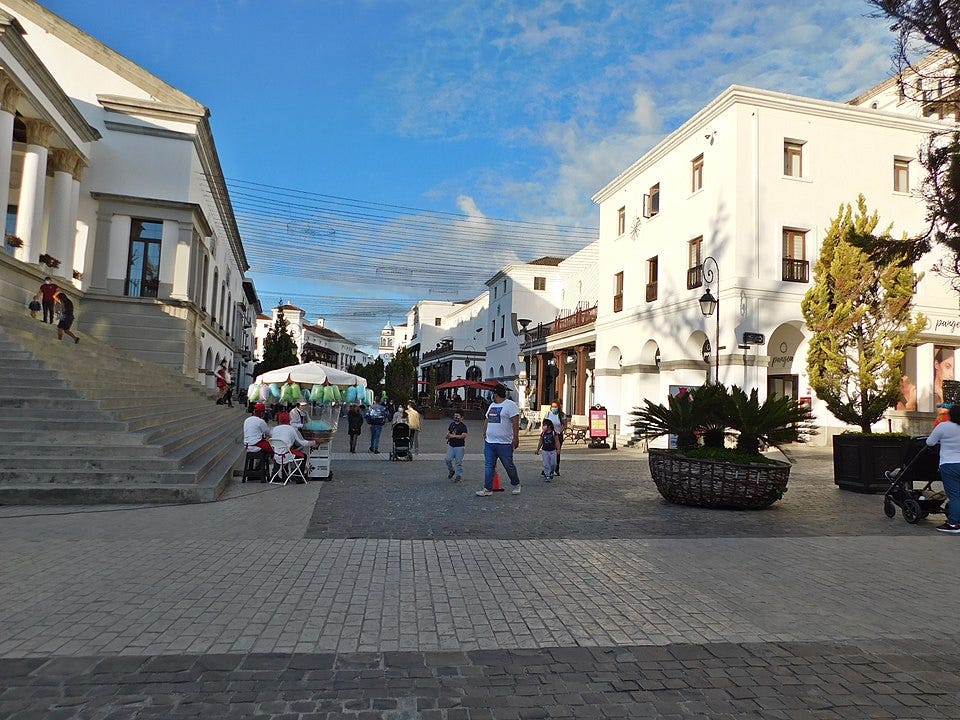
In addition to keeping a human scale in mind, the designers were also cognizant of both human history and the natural landscape, using largely traditional and natural materials. They honored and incorporated elements of local culture and architectural heritage, including columns decorated with carvings of corn in reference to South American mythology, and trapezoidal staircases that evoke ancient Mayan structures. At the same time, the overall style is not isolated but rather interconnects with the entire Western architectural tradition founded on the buildings of the Greeks and Romans.
Unsurprisingly, the town has become extremely popular, with locals and tourists alike flocking to its gentle, greenery-fringed boulevards and its arching, shady colonnades. The beauty and charm of this urban area has produced economic benefit. People naturally congregate around such well-designed spaces. Beauty and financial viability don’t have to be mutually exclusive.
Cayalá shows us that it is possible—it is possible to build with aesthetics and history and landscape and a human scale in mind. Such sensibilities need not be relegated to the past. Nothing (other than modernist ideology) says that modern buildings must be ugly, or banal, or inhuman, or utilitarian simply because they are modern. We ought to build spaces that reflect our rational nature and our capacity to appreciate beauty. Humanity aspires after all things “superfluous”—that is, things that are not “necessary” in a utilitarian sense but are, rather, necessary in a much more profound sense: necessary to the human soul as such. Architecture is no exception, and one of the distinctive features of traditional culture is its ability to integrate the useful and the beautiful. This is a skill we can recover, as this case study demonstrates. We have to move past a narrow, materialist, utilitarian mindset and to value something more than just efficiency.
One of the distinctive features of traditional culture is its ability to integrate the useful and the beautiful. This is a skill we can recover, as this case study demonstrates. We have to move past a narrow, materialist, utilitarian mindset and to value something more than just efficiency.
A few years ago, I wrote about how Irish architecture contrasts so sharply with the American architecture I’m used to. Irish buildings—many of which are centuries old—fit harmoniously into the landscape, celebrating the local and planting themselves in the historical. I wrote,
The buildings in Ireland enhance the natural beauty, rather than detracting from it. Each village, down to the last cottage, seems to have been built with a strong aesthetic sense and an awareness of place. The buildings are not modern, generic contraptions stuck pragmatically and inharmoniously into a landscape that could be anywhere. No, they are part of that landscape, as integral to it as the trees and streams themselves. One reason for this is that many of the buildings are very old and were built from the same rock that protrudes from the mountainsides—the material that was at hand. This was long before the days of mass-produced and imported construction materials. The earth of Ireland is in its buildings, just as the buildings are in the earth. It can be hard to tell where the stone wall ends and the hillside begins, where the forest terminates and the hedge originates. One grows organically (sometimes literally) out of the other. This is a country that was built in harmony with the landscape.
With its beautiful white stone and red clay shingles, Cayalá again shows us that the old structures of places like Ireland can be replicated in modern-day settings. Harmony with the natural landscape and the local history is not, by nature, something old. It can be reclaimed, and reclaiming it cuts down on both aesthetic and environmental pollution. “In Ciudad Cayalá, visitors experience a fusion of modernity and tradition,” writes Mauricio Cáceres for Latina Republic. “Moreover, Cayalá’s commitment to sustainability is evident through extensive reforestation efforts, waste recycling initiatives, and innovative wastewater treatment practices, making it a model eco-conscious community.”
When we think holistically, everyone and everything benefits.
What We Can Learn/Key Takeaways:
What we have in this case study is a beautiful example of the kind of integration needed for true cultural restoration: the combination of past and present; the combination of various architectural and cultural traditions into a seamless whole; the combination of social, cultural, and commercial spaces and activities within a single schema; the combination of human development with a respect for the natural environment.
Keep in mind, too, the role played by supporting institutions in all this: Estudio Urbano was able to craft this sparkling city because they were trained in classical architecture by Notre Dame. We need to support universities and other institutions that preserve and transmit this kind of wisdom, such as the program at Notre Dame, or the new program at Benedictine College.
My hope is that readers can draw inspiration from Cayalá and the emerging architectural movement it represents. Many more cities and developments of a traditional mold are being built. Beauty can be reclaimed in the public square—quite literally—and in some corners of the world this is already happening.
In the next issue, we’ll explore the farming program inspired by Wendell Berry that teaches Virgil alongside soil microbiology…
If you know of cultural renewal projects in your community or beyond, drop a comment below. We’re always looking for new initiatives to feature in this series, in the realm of the arts, literature, education, politics, economics, or religion.
This was a free preview of my new series of posts, Cultural Renewal Case Studies, a collection of in-depth looks at people, events, organizations, and movements actively engaged in rebuilding Western culture based on traditional principles. These case studies will highlight people busy reforming modern culture in accordance with the good, the true, and the beautiful. Instead of just criticizing the ills of modernity, they’ve gotten to work healing them, providing helpful lessons and models for the rest of us.
Future issues will NOT be free.
To receive future installments in this exciting new series, become a paid subscriber.
Please share this post widely, too, so we can get the word out about this new series which, I pray, will bring hope and inspiration to many. The more this content is shared and the more paid subscribers we accumulate, the more I can write on these topics.



